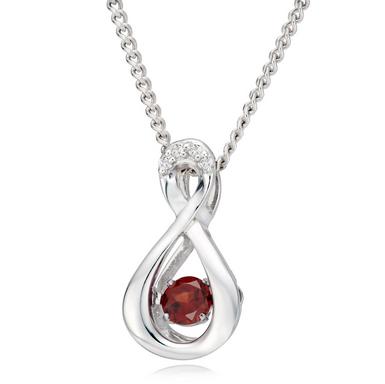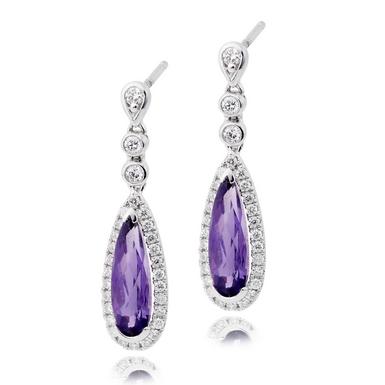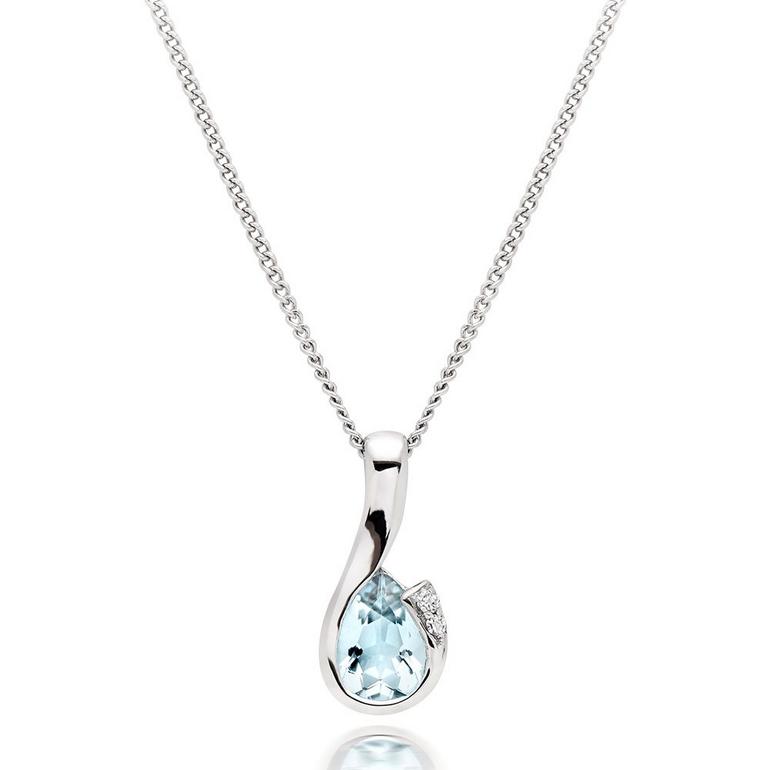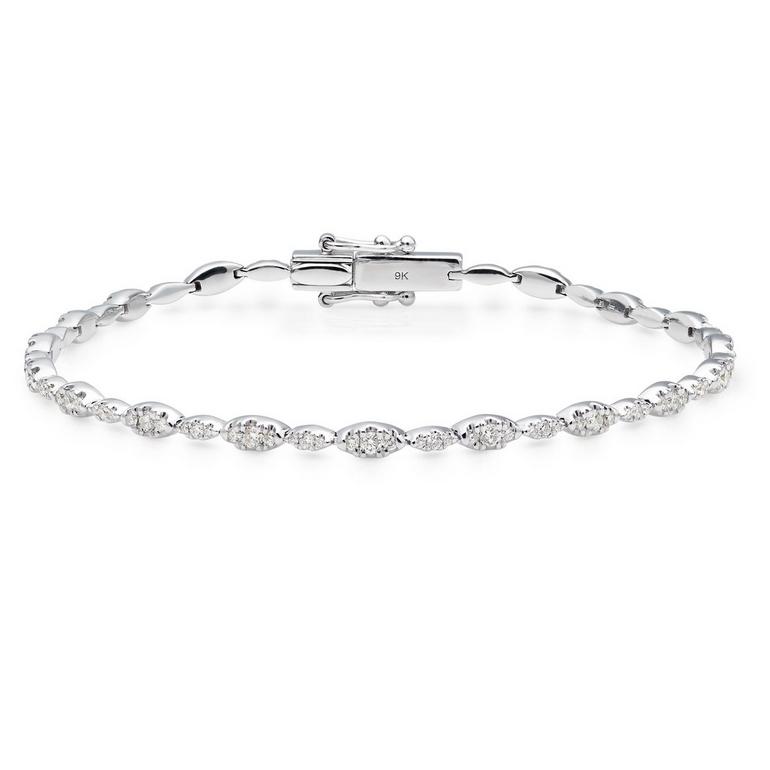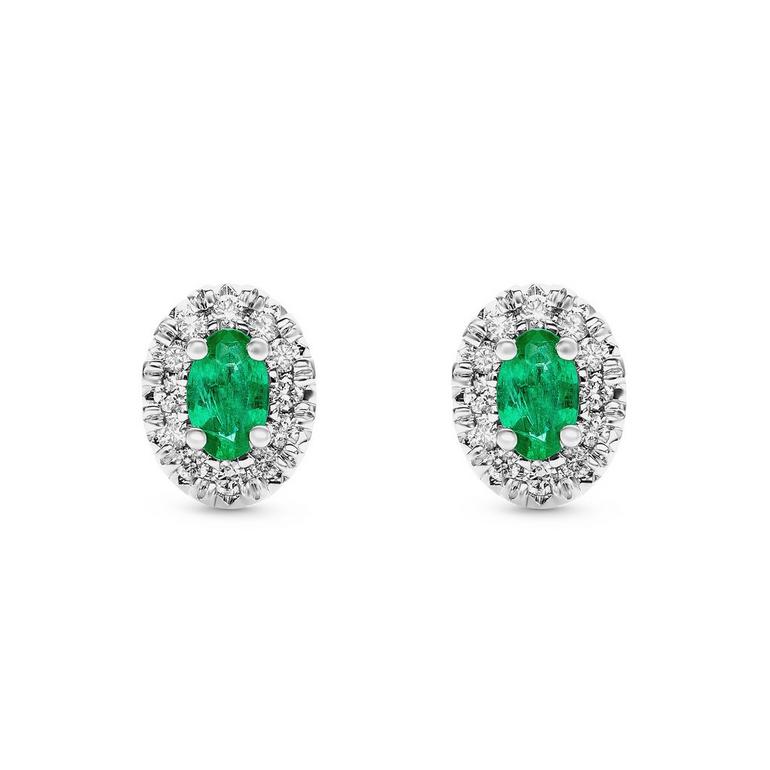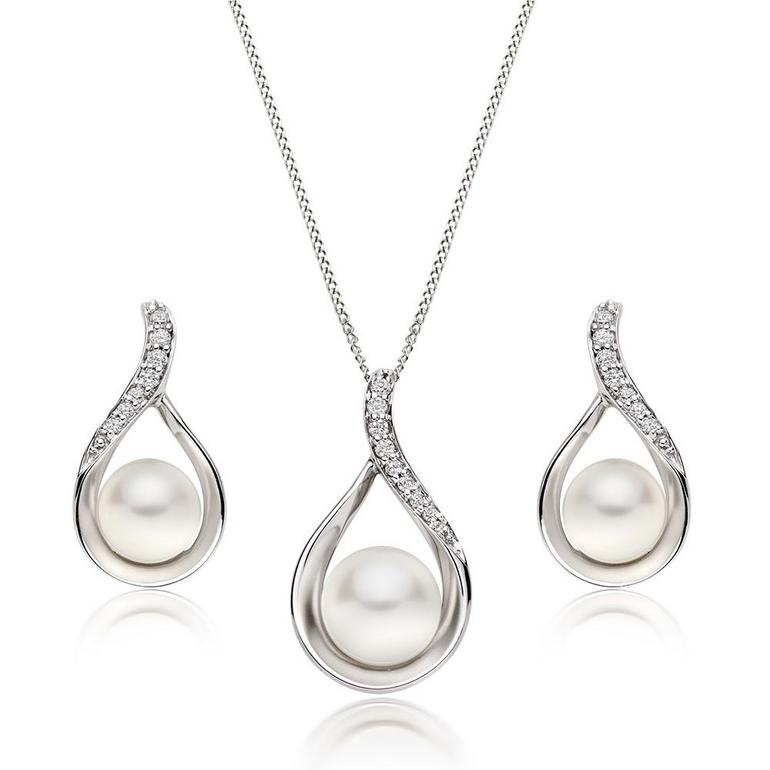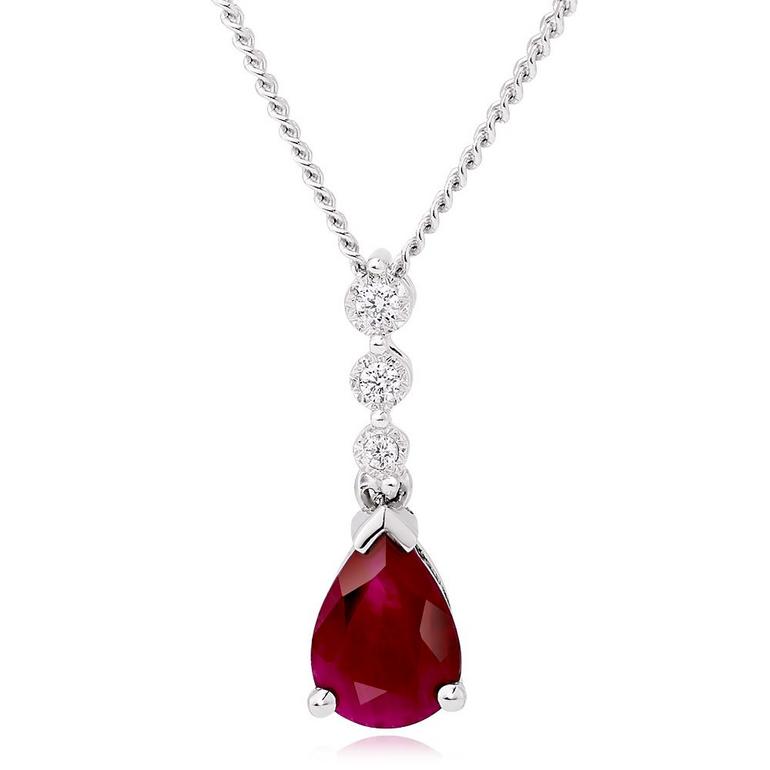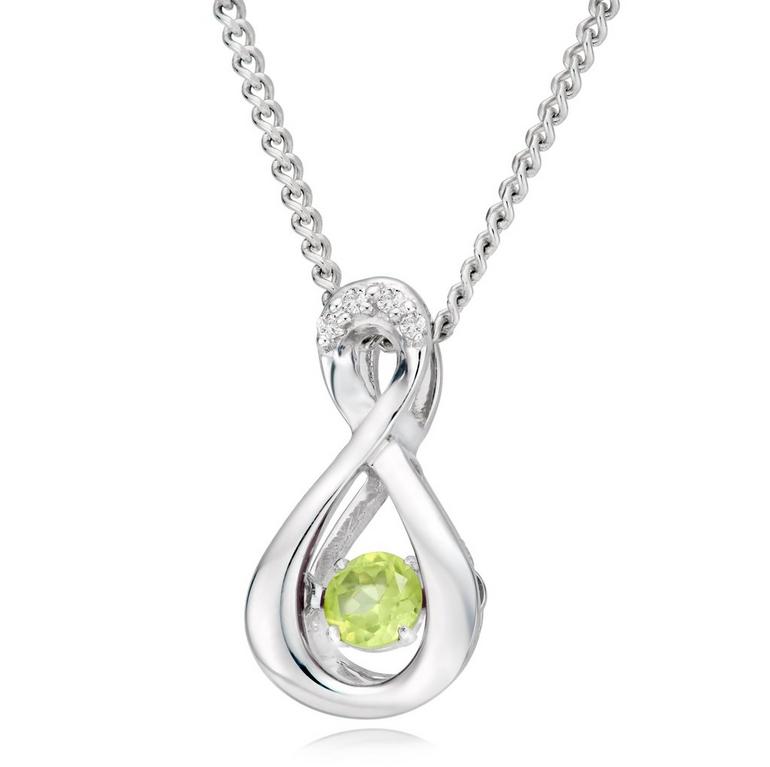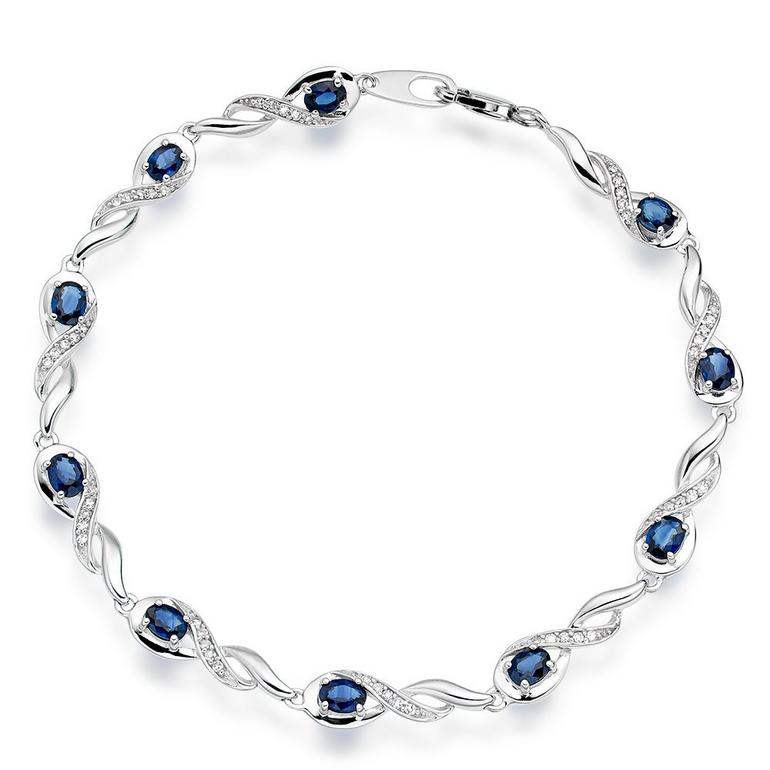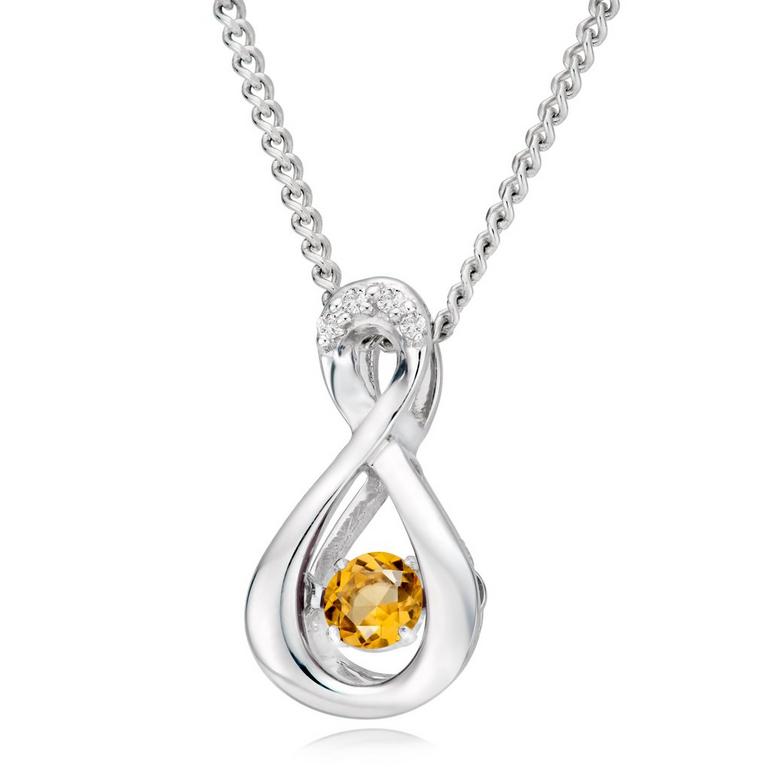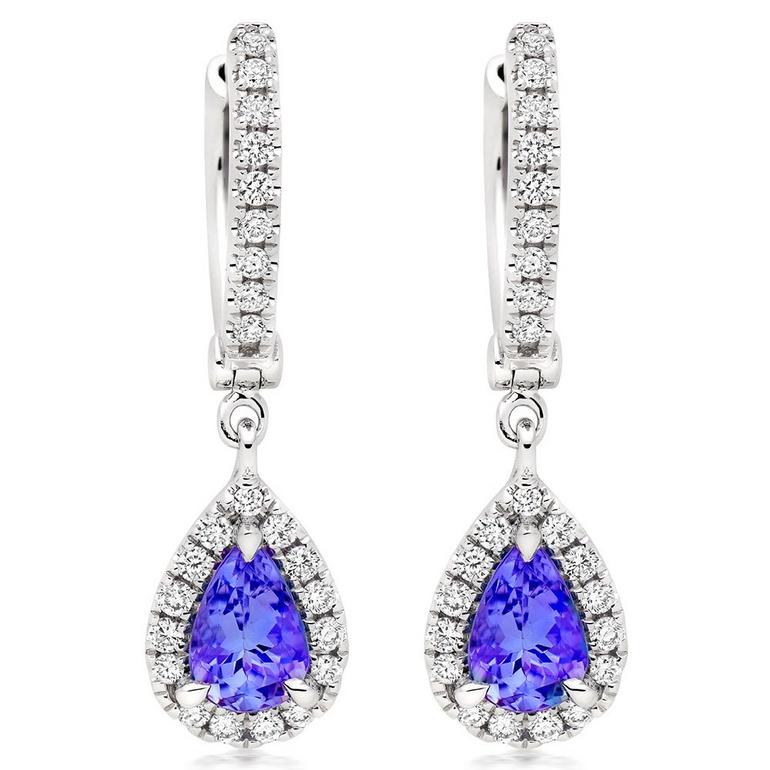
A Guide To Birthstone Jewellery
Meaningful and personal, birthstone jewellery makes a perfect gift for birthdays, anniversaries and special occasions. With our experts’ advice, we’re taking you through the history, meaning and science behind each birthstone, as well as how to care for them.
SHOP BIRTHSTONE JEWELLERYWhat is a birthstone?
A birthstone is a gemstone that represents someone’s birthday - usually their month or zodiac sign. Legends speak of the healing, protective powers, and spiritual symbols of each birthstone, and it’s believed that wearing a birthstone during its assigned month heightens these powers.
Mohs scale
What is the Mohs scale of hardness?
Created in 1812 by scientist Friedrich Mohs, the Mohs hardness scale rates 10 minerals based on the ability of one mineral to scratch another, 1 being the softest and 10 being the hardest. The harder the mineral, the more you can rely on its longevity, quality, and durability. The diamond is the hardest natural mineral in the world, and therefore, diamond rings and diamond jewellery are of the highest quality and make beautiful investment pieces.
Softest

1 Talc
2 Gypsum
3 Calcite
4 Fluorite
5 Apatite
6 Orthoclase
7 Quartz
8 Topaz
9 Corundum
10 Diamond
Hardest

Softest
Hardest
This scale gives you an idea of how hard other gemstones are, including the gemstones mentioned below.
Birthstones month by month
Imbued with mythology, the origin of birthstones can be traced back to ancient times – when 12 stones were associated with the 12 signs of the zodiac. The list of birthstones as we know it today was created in 1912 by the National Association of Jewellers in America. Our exclusive Dance by Beaverbrooks collection features pendants which boast all 12 beautiful birthstones.
-
January
January’s birthstone | Garnet
Most commonly a deep red gemstone, January’s birthstone garnet makes a beautiful gift for January birthdays. Symbolising friendship, power and happiness, garnet is said to protect the wearer during travel and give guidance in the night. A durable gemstone, garnet ranges from 6.5 to 7.5 on the Mohs hardness scale.
Garnet is actually a family of crystallised minerals, with 29 varieties. Although most people associate garnet with red, garnets actually come in every colour except blue. Deriving from the Latin word ‘granatum’, meaning seed (due to the resemblance to a pomegranate seed), garnet jewellery dates back to early Egyptian, Greek and Roman times. It was very popular in Victorian jewellery, giving it a regal and sought-after status.
Cleaning tip: Use warm soapy water and a soft bristle brush. Dry with a soft cloth.
SHOP GARNET JEWELLERY -
February
February’s birthstone | Amethyst
Most commonly seen in a beautiful share of pale lilac or deep purple, amethyst is the birthstone for February and also makes a perfect gift for Valentine’s Day. A symbol of peace, protection and tranquillity, amethyst is said to bring calm and serenity to the wearer.
Derived from the Greek word ‘amethystos’, translating to ‘not drunken’; it was believed that amethyst protected you from getting drunk. Historically, only royals were allowed to wear this gem and it’s been found in royal collections around the world. Composed of quartz, amethyst is formed through crystals in rocks and lava – getting its striking purple shades from irradiation, impurities and trace elements. Amethyst has a hardness of 7 on the Mohs scale, meaning it’s durable.
Cleaning tip: Use warm soapy water and a soft bristle brush. Dry with a soft cloth.
SHOP AMETHYST JEWELLERY -
March
March’s birthstone | Aquamarine
A beautiful blue birthstone for the month of March, aquamarine exudes the tranquillity of the ocean. Believed to keep you calm and peaceful, aquamarine is also associated with courage, loyalty and friendship. It’s used by healers to drive out negative emotions.
Meaning ‘water of the sea’, aquamarine is quite literally named after the ocean. Historically, it’s been used by sailors to give them a safe voyage across the seas. In the Middle Ages, it was believed that aquamarine was an antidote to poisons. Aquamarine is a type of beryl (the same mineral family that includes emerald), a rare mineral found in igneous and metamorphic rocks. With a rating of 7.5 to 8 on the Mohs hardness scale, it’s a durable gemstone for jewellery.
Cleaning tip: If your aquamarine is set with diamonds, use our Diamond Dazzle Stik.
SHOP AQUAMARINE JEWELLERY -
April
April’s birthstone | Diamond
One of our favourite gemstones, diamonds are the birthstone for those lucky enough to be born in April. Representing affection, eternity and everlasting love, diamonds are also believed to give you courage, strength and endurance.
Derived from the Greek word ‘adamas’ meaning invincible, diamonds have been the traditional symbol of love since ancient times. Some ancient civilisations believed that diamonds were the earth form of lightning and have been associated with many healing powers throughout history. A type of carbon, diamonds are formed under high temperature and pressure conditions deep within the earth’s crust. It’s the hardest mineral on Earth.
Cleaning tip: Use our Diamond Dazzle Stik and rinse with warm water. Dry with a soft cloth.
SHOP DIAMOND JEWELLERY -
May
May’s birthstone | Emerald
One of the most highly prized gemstones, the birthstone for May is the emerald – a striking green stone and coveted amongst royalty. Signifying rebirth (which is perfect for this springtime of year), emeralds are also said to give you the power of youth, vitality, and good fortune.
The name emerald comes from the Greek word ‘smaragdus’, meaning green. Originally sourced from mines in Egypt, this vibrant gemstone is known for being Cleopatra’s all-time favourite. She claimed ownership of every single emerald mine in Egypt during her rule. Like aquamarine, emerald is a variety of beryl. Its green colour comes from chromium and iron infiltrating its mineral structure during formation. Emerald is 7.5 to 8 on the Mohs scale, so it’s durable enough for jewellery wear.
Cleaning tip: Use our Sonic Dazzle Stik and rinse with warm water. Dry with a soft cloth.
SHOP EMERALD JEWELLERY -
June
June’s birthstone | Pearl
Adored for its pearly and iridescent lustre, pearls are also the anniversary gemstone for 30 years of marriage. June has two other birthstones; alexandrite and moonstone. A symbol of innocence, purity and faithfulness, pearls have also come to represent a happy marriage. Originating from the French word ‘perle’ which means led, referring to the leg shape of a mollusc shell, pearls were once thought to be the tears of the gods.
Formed by living organisms within oysters and mussels; when a foreign object enters their shell, the oyster will surround the object with layers of nacre – which forms the exquisite pearl. Natural pearls form naturally, whilst cultured pearls are the result of humans inserting the foreign object into the mollusc by hand. Only 2.5 on the Mohs hardness scale, pearls are soft and can be scratched.
Cleaning tip: To avoid damaging the pearl, clean occasionally with warm soapy water and dry with our Jewellery Beauty Wipes.
SHOP PEARL JEWELLERY -
July
July’s birthstone | Ruby
A fiery and passionate red, the birthstone of July is ruby. Ruby is also the anniversary gemstone for 40 years of marriage. Said to protect you from misfortune and ward off evil, rubies are also seen as symbols of love and passion – making them a wonderful alternative to diamonds for an engagement or wedding ring.
Derived from the Latin word ‘ruber’, meaning red, this vivid gemstone was called the ‘King of Gems’ by ancient Hindus. It was believed that the glowing fire of rubies could boil water and melt wax. A variety of the mineral corundum and forming from metamorphic rock, rubies come in lots of colours, including blue – but you’ll know these as sapphires. Ruby is 9 on the Mohs hardness scale, a relatively hard gemstone with excellent toughness.
Cleaning tip: Use our Sonic Dazzle Stik and rinse with warm water. Dry with a soft cloth.
SHOP RUBY JEWELLERY -
August
August’s birthstone | Peridot
With a unique lime green glow, peridot is one of August’s three birthstones – the others being sardonyx and spinel. Peridot is associated with prosperity and good fortune, and in Hawaii it symbolises the tears of Pele; the volcano goddess of fire who controls the flow of lava.
The origin of the name is unclear, with some believing its derived from the Arabic faridat meaning gem and some believing its rooted in the Greek word perdiona – meaning ‘giving plenty’. Ancient Egyptians called it the ‘gem of the sun’, and Egyptian priests believed it harnessed the power of nature. Formed deep within the earth, peridot is brought to the surface by volcanoes. Its signature green colour comes from the composition of the mineral itself – rather than trace impurities. A durable gemstone, Peridot ranges from 6.5 to 7on the Mohs scale.
Cleaning tip: Use our Sonic Dazzle Stik and rinse with warm water. Dry with a soft cloth.
SHOP PERIDOT JEWELLERY -
September
September’s birthstone | Sapphire
A favourite of royalty, sapphires are also the gemstone for 45th wedding anniversaries. Sapphires symbolise loyalty, nobility and integrity, and it’s also said to focus the mind, encourage self-discipline and channel higher powers.
Deriving from the Latin word ‘sapphirus’, meaning blue stone, Greeks wore sapphires for guidance, Buddhists believed it brought spiritual enlightenment and Hindus used it during worship. A form of the mineral corundum (like the ruby), sapphires actually come in every colour except red – these are rubies. Corundum is the second hardest mineral after diamond, meaning sapphires are not only coveted in the jewellery world but for industrial processes too.
Cleaning tip: Use our Sonic Dazzle Stik and rinse with warm water. Dry with a soft cloth.
SHOP SAPPHIRE JEWELLERY -
October
October’s birthstone | Opal
With changing iridescent tones, the opal is October’s birthstone. Said to enhance imagination and creativity, opal also symbolises hope, innocence and purity. Romans believed opals also brought good fortune. The word opal means ‘to see a change of colour’ in Greek. During the Middle Ages, Romans believed it was the most powerful because opal has the colours of all other gems with its rainbow iridescence.
Opal’s signature play of colour is caused by millions of tiny silica spheres in different sizes. These spheres diffract light to display different colours of the rainbow. Opal’s hardness ranges from 5 to 6.5 on the Mohs scale.
Cleaning tip: Use warm soapy water and a soft bristle brush. Dry with a soft cloth.
SHOP OPAL JEWELLERY -
November
November’s birthstone | Topaz & Citrine
Most commonly seen in shades of brown, green, red, pink, yellow or blue, topaz is one of November’s birthstones – with blue topaz being the most popular in jewellery. The name topaz derives from the ancient Greek name for St. John’s Island in the Red Sea, where lots of yellow stones were famously mined there. Throughout its history, it was thought that all yellow gems were considered topaz and all topaz was thought to be yellow. This is why citrine is also a favourite for those born in November, as it sparkles in a beautiful yellow golden hue.
The ancient Egyptians and Romans believed topaz had the power to protect and heal. It is also said to have calming and healing properties, stopping nightmares, cooling tempers and restoring sanity. Citrine brings enthusiasm into your life, attracting wealth, prosperity and success.
Cleaning tip: Clean occasionally with warm soapy water and dry with our Jewellery Beauty Wipes.
-
December
December’s birthstone | Tanzanite
Tanzanite is a magnificent gemstone found in only one part of the world; Tanzania. With its limited supply and single location, tanzanite has become highly prized for its rarity and beauty making it an extra special December birthday birthstone gift.
Not only is it rarer than a diamond, it’s also a present they will treasure forever.
A relatively modern stone, tanzanite was discovered in the foothills of Mount Kilimanjaro in the 1960s – and it’s still only found in this one location today. Tanzanite is the exquisite blue variety of the mineral zoisite. Ranging from pale blue to a deep blue with violet undertones, the blue colour is caused by trace amounts of vanadium mixed with extreme heat. Tanzanite measures 6 to 7 on the Mohs hardness scale.
Cleaning tip: Cleaning tip: Use our Sonic Dazzle Stik and rinse with warm water. Dry with a soft cloth.
SHOP TANZANITE JEWELLERY

“Brighten up a loved one’s special occasion with a gorgeous birthstone gift. Choose either their birthstone or the birthstone of someone they wish to keep close to their heart for an extra thoughtful gift.”
- Lorna, Head of Diamonds and Jewellery
Read Lorna's BioZODIAC
Birthstones by Zodiac
Birthstones are actually historically linked to the zodiac, not the months; as there were 12 stones for the 12 signs of the zodiac during Roman times. Choosing a birthstone by zodiac is another way to find a personal and meaningful piece of jewellery for yourself or a loved one.
We’ve listed the below zodiac birthstones, but there’s often alternative stones for each sign. Align your stars and heighten your powers with your zodiac birthstone.
Shop birthstone jewellery
Whether you’re looking for birthstone anniversary gifts or you’re marking to make that special someone’s birthday, discover our beautiful collection of birthstone jewellery for every occasion.

“Crafted in 9ct white gold and glistening with your every move, our Dance by Beaverbrooks pendants are the perfect birthstone gift for a loved one who likes to sparkle with a touch of colour.”
- Lorna, Head of Diamonds and Jewellery
SHOP DANCE BIRTHSTONESINSPIRATION & ADVICE
Inspiration & Advice
From caring for your jewellery to finding more special milestone gifts, discover our helpful guides.
Join The Club
Want to receive emails from us on the latest offers and product launches, as well as plenty of style and aftercare advice? Sign up to see all the best bits from us.
Sign up now